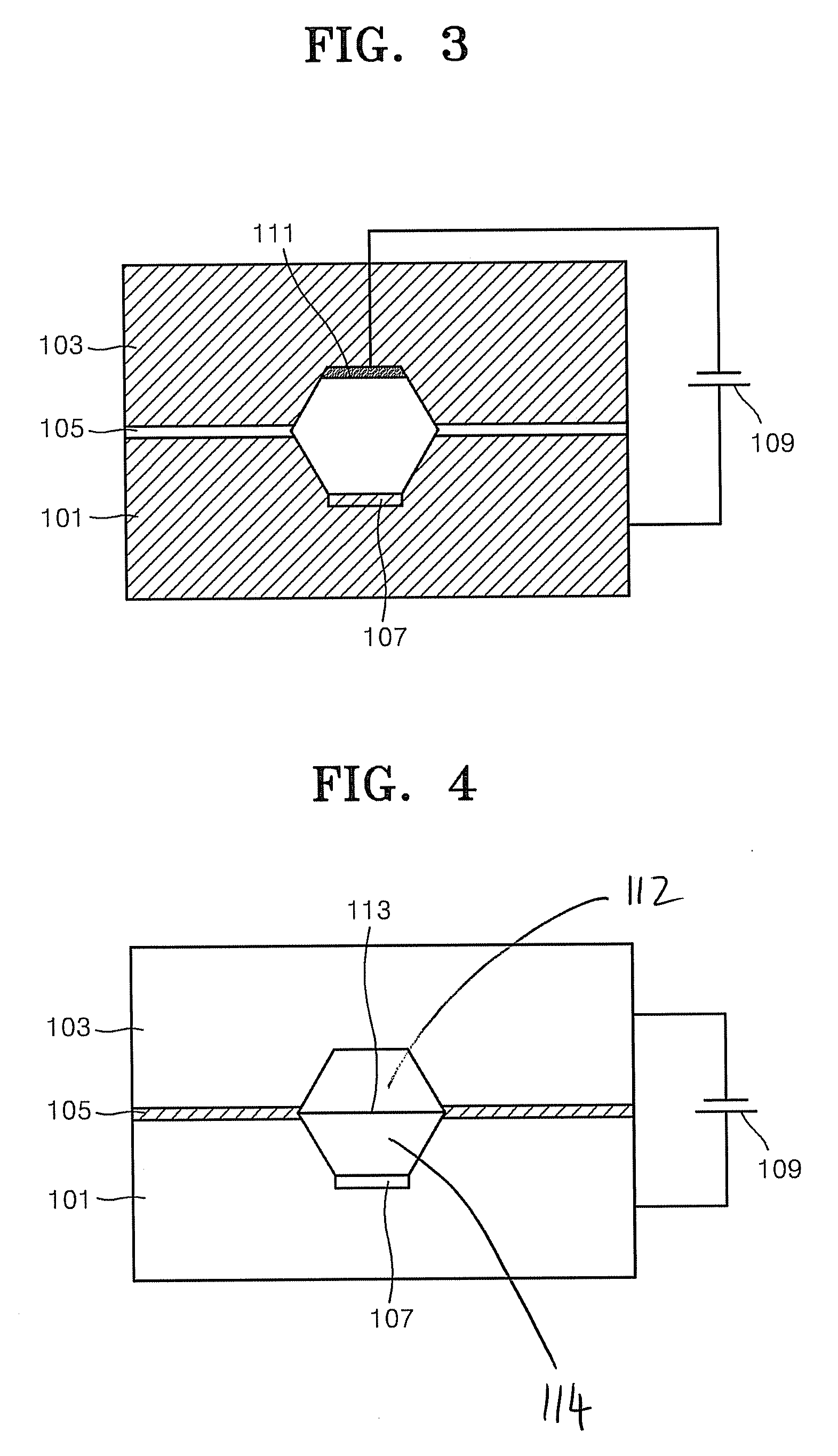Microfluidic device for electrochemically regulating the ph of a fluid therein using semiconductor doped with impurity and method of regulating the ph of a fluid in a microfluidic device using the same
a microfluidic device and electrochemical technology, applied in the direction of fluid pressure measurement, liquid/fluent solid measurement, peptides, etc., can solve the problems of dilution, additional devices and procedures can be a serious problem, and the ph of fluid can be a problem
- Summary
- Abstract
- Description
- Claims
- Application Information
AI Technical Summary
Benefits of technology
Problems solved by technology
Method used
Image
Examples
example 1
Preparation of a Microfluidic Device for Regulating the pH
[0066] A microfluidic device for electrochemically regulating the pH of a fluid was prepared. The microfluidic device included: a cathode substrate which is formed of silicon doped with impurities; an anode substrate which is formed of silicon doped with impurities, facing the cathode substrate and forming a reaction chamber with the cathode substrate; and a nonconductor which forms a boundary between the cathode substrate and the anode substrate and prevents contact between the anode and the cathode, wherein the reaction chamber includes an ion exchange membrane by which the reaction chamber is divided into the cathode and anode chamber and a pillar structure capable of adsorbing biomolecular materials is formed inside the chamber of the cathode substrate.
[0067] In particular, each of the cathode and anode chambers of the microfluidic device had a volume of 10 microliters. A positive ion exchange membrane containing the f...
example 2
Preparation of a Microfluidic Device for Regulating the pH
[0068] A microfluidic device was prepared in the same manner as in Example 1, except that the cathode and anode substrates were formed of p-type silicon (resistivity <0.005 ohm cm) doped with boron.
example 3
Preparation of a Microfluidic Device for Regulating the pH
[0069] A microfluidic device was prepared in the same manner as in Example 1, except that the cathode substrate was formed of p-type silicon (resistivity <0.005 ohm cm) doped with boron and the anode substrate was formed of n-type silicon (resistivity <0.005 ohm cm) doped with arsenic.
PUM
| Property | Measurement | Unit |
|---|---|---|
| Electric potential / voltage | aaaaa | aaaaa |
| Microstructure | aaaaa | aaaaa |
| Reduction potential | aaaaa | aaaaa |
Abstract
Description
Claims
Application Information
 Login to View More
Login to View More - R&D
- Intellectual Property
- Life Sciences
- Materials
- Tech Scout
- Unparalleled Data Quality
- Higher Quality Content
- 60% Fewer Hallucinations
Browse by: Latest US Patents, China's latest patents, Technical Efficacy Thesaurus, Application Domain, Technology Topic, Popular Technical Reports.
© 2025 PatSnap. All rights reserved.Legal|Privacy policy|Modern Slavery Act Transparency Statement|Sitemap|About US| Contact US: help@patsnap.com



